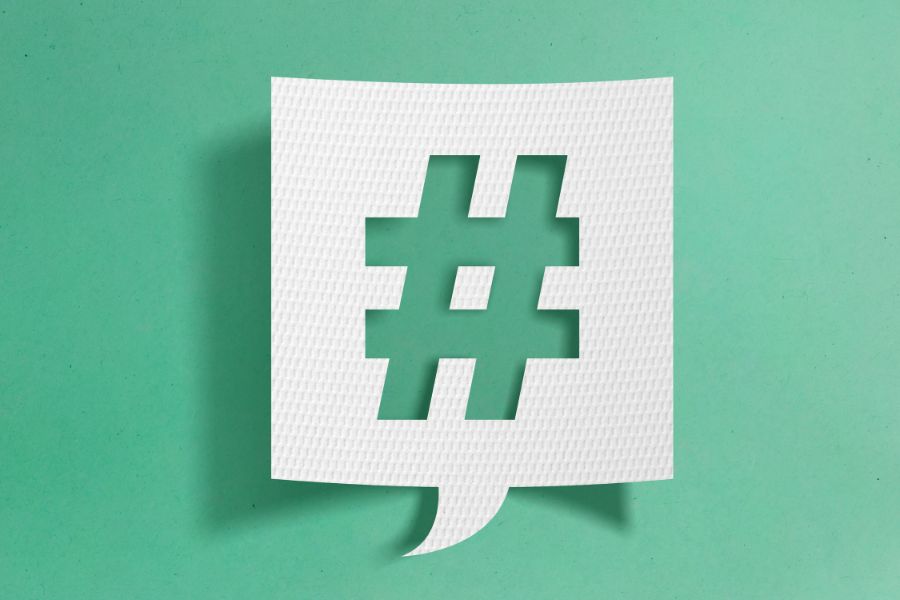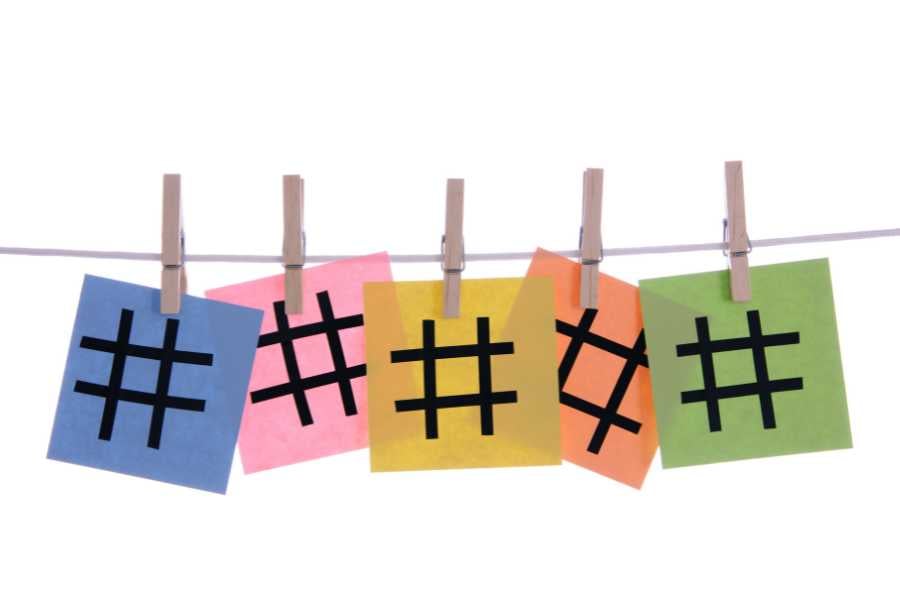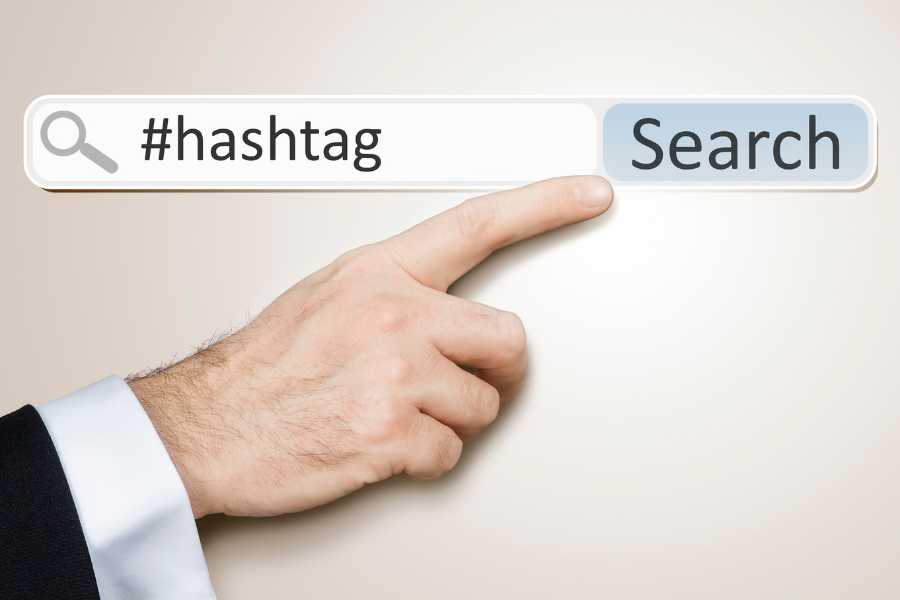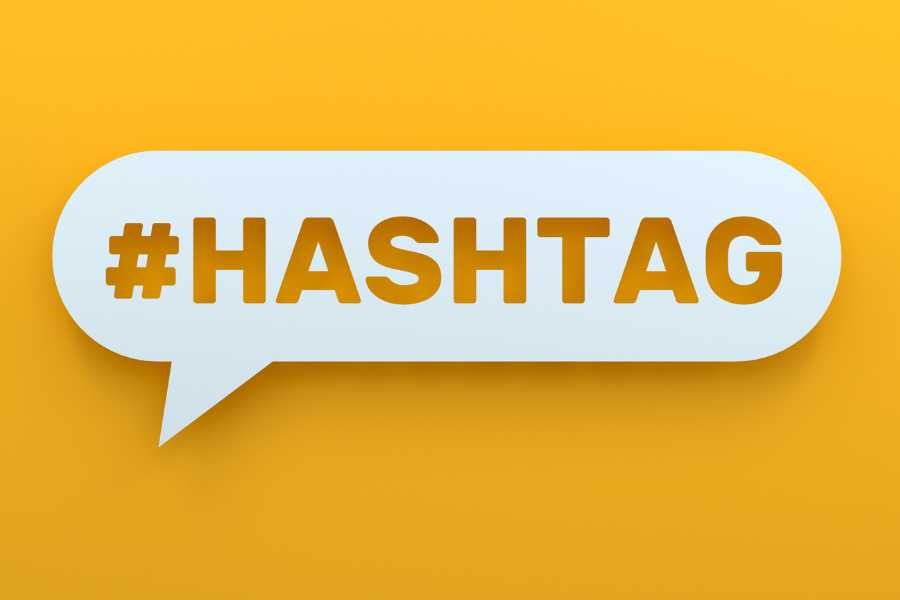Ever found yourself in the whirlwind of social media, wondering, “What is a hashtag, and how do I use it to amplify my posts?”
You’re not alone!
This ubiquitous hashtag symbol has transformed how we communicate online, turning simple phrases into worldwide trends.
From helping your business gain visibility to amplifying your advocacy on social issues, hashtags hold immense power.
But how exactly do you harness this power? Buckle up and get ready to ride the hashtag wave.
Let’s dive right in!

What is a Hashtag & How Do They Work?
Welcome to the captivating world of hashtags — dynamic symbols of social media power!
Picture a hashtag as a powerful, interactive button that turns a keyword or phrase into a direct route to a variety of related content. This is achieved by preceding the keyword or phrase with the hash symbol (#).
In essence, a hashtag is used within a message to identify a specific topic or theme and streamline a search for it.
They’re the heartbeat of social media trends, acting like live wires that connect hundreds, thousands, or even millions of social media users around a particular subject.
It’s like placing a tiny yet effective spotlight on a phrase or word, illuminating it for all social media users to see, engage with, or follow.
Think of it as a metadata tag that helps social media users easily find and engage with content they’re interested in.
Say you’re an environmental enthusiast. You might be inclined to use or follow the hashtag #ClimateChange.
Now, each time someone posts or searches using this hashtag, they’ll be directly connected to a galaxy of posts — yours included — that share the same interest in climate change.
Got it?
Alright, let’s dive even deeper into the sea of hashtags.
Why Use Them in Your Social Media Posts?
Now that we’ve taken a brief sojourn into the world of hashtags, you might find yourself asking, “What’s the big deal about hashtags?”
Well, it’s all about visibility, connection, and engagement.
Firstly, hashtags act as a spotlight, illuminating your content and helping it stand out in the bustling marketplace of ideas that is social media.
For instance, by adding a relevant hashtag such as #HealthyRecipes to your Instagram post, you’re not just talking about your delicious, healthy meal — you’re making your social media post discoverable by other health enthusiasts who are searching for new recipes.
Hashtags are also key players in the game of brand awareness.
They’re the digital equivalent of a catchy slogan or a striking logo, helping your content become discoverable to your target audience.
Imagine launching a new line of eco-friendly products; using a branded hashtag like #YourBrandGoesGreen can attract eco-conscious customers to your posts and your brand as a whole.
In addition, a well-chosen hashtag can catapult a tweet from being a simple message into a trending topic.
Remember when the ice bucket challenge went viral?
The hashtag #IceBucketChallenge became a worldwide sensation, leading to a significant increase in donations and awareness for ALS.
Intrigued, isn’t it? Indeed, the power of hashtags is immense.
They’re not just an online trend — they’re a vital tool for communication, social media marketing, and community-building on social media.
Yet, a word of caution…
Avoid the Banned Hashtag Trap
It’s crucial to know that not all hashtags are created equal. Some, known as “banned hashtags,” could lead to your content being shadowbanned, reducing your social media post visibility.
Therefore, always do your homework before using a particular hashtag.
How to Use Hashtags on the Top Social Media Platforms in 2024

Each social media platform has its unique algorithm and users, which means the hashtag strategy that works on Instagram may not yield the same results on LinkedIn.
Let’s look at each platform…
1. Twitter Hashtag
Ah, Twitter, the birthplace of the hashtag phenomenon.
When used effectively, hashtags on Twitter can increase your tweet’s visibility and spark dynamic, real-time conversations. They help connect your content with Twitter users interested in similar topics, thereby expanding your reach beyond just your followers.
Twitter isn’t the platform to flood your posts with hashtags.
In fact, Twitter themselves recommends 2 hashtags per tweet as best practice.
So, be selective and intentional with your choices.
Also, capitalizing each word in multi-word hashtags (#LikeThisExample) makes them more readable and accessible.
2. Instagram Hashtags
Instagram is a hashtag powerhouse where these unique identifiers can catapult your content’s visibility.
They play a significant role in the Instagram algorithm, influencing how many people see your posts.
For instance, if your posts get high engagement soon after posting, Instagram is more likely to view your post as quality content and will push it to the top of your followers’ feeds and possibly even onto the Instagram Explore page.
For a successful Instagram hashtag strategy, consider a balanced mix of branded hashtags (specific to your business), community hashtags (to engage with a particular group), and content hashtags (which describe what’s in the image).
Instagram suggests using between 3 to 5 hashtags per post for optimal engagement, but feel free to experiment with what works best for your content and audience.
3. Facebook Hashtags

Hashtags on Facebook may not be as popular as on Instagram or Twitter, but they can still be a useful tool when used strategically.
They can help categorize your content, making it discoverable to users beyond your immediate followers and contributing to building a broader community.
It’s worth noting that Facebook is a more private social network, and many users’ profiles are set to private, which limits the reach of hashtags. But if you’re a brand or business page, hashtags can be a worthwhile part of your strategy.
Note, Publer suggests that 2 to 3 hashtags are the sweet spot for Facebook posts. Using too many can actually decrease your engagement rate.
4. LinkedIn Hashtags
On LinkedIn, hashtags have transformed from a fun, optional addition to a powerful networking tool.
They’re primarily used for categorizing content by topics, helping users extend their professional reach, and build a network that matches their interests and expertise.
By using them, your content becomes discoverable to all LinkedIn users who follow or search for that specific hashtag.
Unlike other platforms, LinkedIn doesn’t set a limit on hashtag usage, but they recommend keeping it to 3 targeted hashtags for optimal results.
Think of LinkedIn hashtags as your professional compass, guiding you to the right conversations and connections.
5. YouTube Hashtags
While YouTube is primarily known for its content-rich videos, it also recently embraced the power of hashtags.
You can add them in your video description or title to help users discover your content through a simple search. YouTube displays the first three hashtags right above your video title, so pick these wisely!
But don’t stop there.
You can add more relevant hashtags within your video description.
Sprout Social recommends sticking to around 3 to 5 per video.
Importantly, avoid misleading hashtags; YouTube can remove your video if your hashtags don’t align with your content.
Hence, think of YouTube hashtags as a roadmap for your viewers, leading them to your content amidst the vast sea of videos.
6. TikTok Hashtags
In the fast-paced, trend-driven world of TikTok, hashtags have become the lifeblood of viral content.
They categorize content by trends, helping users to find and join trending challenges or topics. Your hashtag selection on TikTok isn’t just about discovery, it’s also about community engagement.
For example, you might see dance challenges like #Renegade or wellness trends like #NatureTherapy go viral. Engaging with these trends using their associated hashtags can enhance your visibility drastically.
Also, it’s worth experimenting with branded hashtags for a marketing campaign.
Chipotle’s #ChipotleLidFlip is a classic example of a branded hashtag driving user engagement and brand visibility.
TikTok’s trending page, ‘For You,’ is an excellent place to research current hashtag trends, and Kolsquare recommends sticking to around 3 to 4 per post to ensure they are targeted and impactful.
5 Essential Steps to Building Your Perfect Hashtag Strategy

It’s time to elevate your social media game and strategically use hashtags for maximum impact.
If you’re ready to transform your random hashtag usage into a finely-tuned strategy, you’re in the right place…
Step 1: Understanding Your Brand and Objectives
First and foremost, understand your brand and what you’re aiming to achieve.
Are you promoting a product, advocating for a cause, or simply aiming to create awareness? Your objectives should guide your hashtag strategy.
For instance, if you’re a coffee shop aiming to promote your new specialty blend, your hashtags could be a mix of product-specific tags like #SpecialtyBlend, location-based tags like #NYCCoffeeShops, and broader coffee-related tags like #CoffeeLovers.
Step 2: Researching Hashtags
The next step is to research relevant hashtags. Look for hashtags commonly used in your industry and by your competitors.
Identify the ones that are getting traction and consider using them. Keep an eye out for trending hashtags, but only use them if they are relevant to your brand and content.
For example, if you’re in the fashion industry, hashtags like #OOTD (Outfit Of The Day) and #FashionTrends can make your posts discoverable to fashion enthusiasts.
Step 3: Creating a Branded Hashtag
Develop a unique branded hashtag that represents your company or campaign. This could be as simple as your company name, a tagline, or the name of a product or campaign.
A great example of this is Nike’s #JustDoIt campaign. It not only encouraged user-generated content but also created a buzz around their brand.
Step 4: Balancing Hashtag Types
Strike a balance between popular (often generic) hashtags, niche-specific ones, and your own branded hashtags.
While popular hashtags can potentially get your content seen by a larger audience, they’re also more competitive. Niche-specific hashtags may have a smaller reach, but they can connect you with a more targeted and engaged audience.
Consider the cosmetics brand MAC, which uses a mix of popular hashtags like #Makeup, niche-specific ones like #LipstickLovers, and their own branded hashtag #MACCosmetics.
Step 5: Analyzing and Refining Your Strategy
Track the performance of your posts with different hashtags. Tools like Sprout Social, Mention, or Hashtagify can be very useful for this.
Based on your analysis, refine your strategy, experimenting with different hashtags and measuring their impact.
Remember, just like any other strategy, it’s crucial to monitor, analyze, and adjust your hashtag strategy over time to make sure it’s effective and you’re reaching your desired audience.
Embrace the Power of Hashtags!

Feeling a bit like Alice in hashtag Wonderland? Totally understandable.
Navigating the world of hashtags can seem like learning a new language, but remember — every expert was once a beginner.
This journey through the mechanics of hashtags has left you equipped with powerful insights, actionable strategies, and a newfound appreciation for this small, yet mighty hashtag symbol.
So, are you ready to turn your hashtags into h-tags (hits)? Of course, you are!
Go on and conquer the social media sphere, one hashtag at a time.





